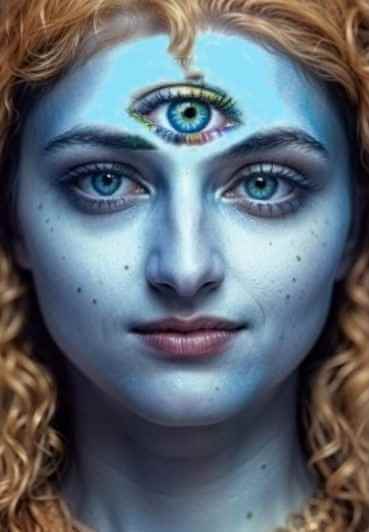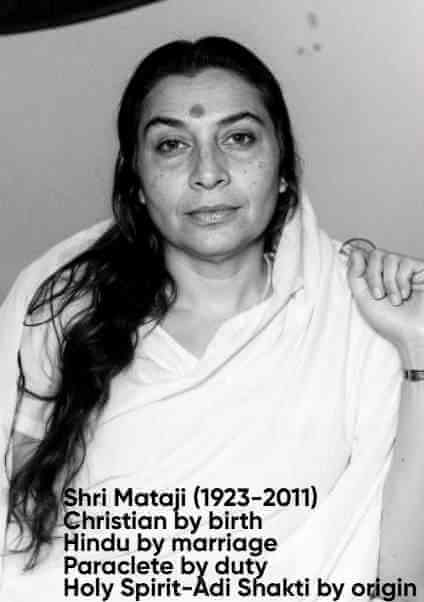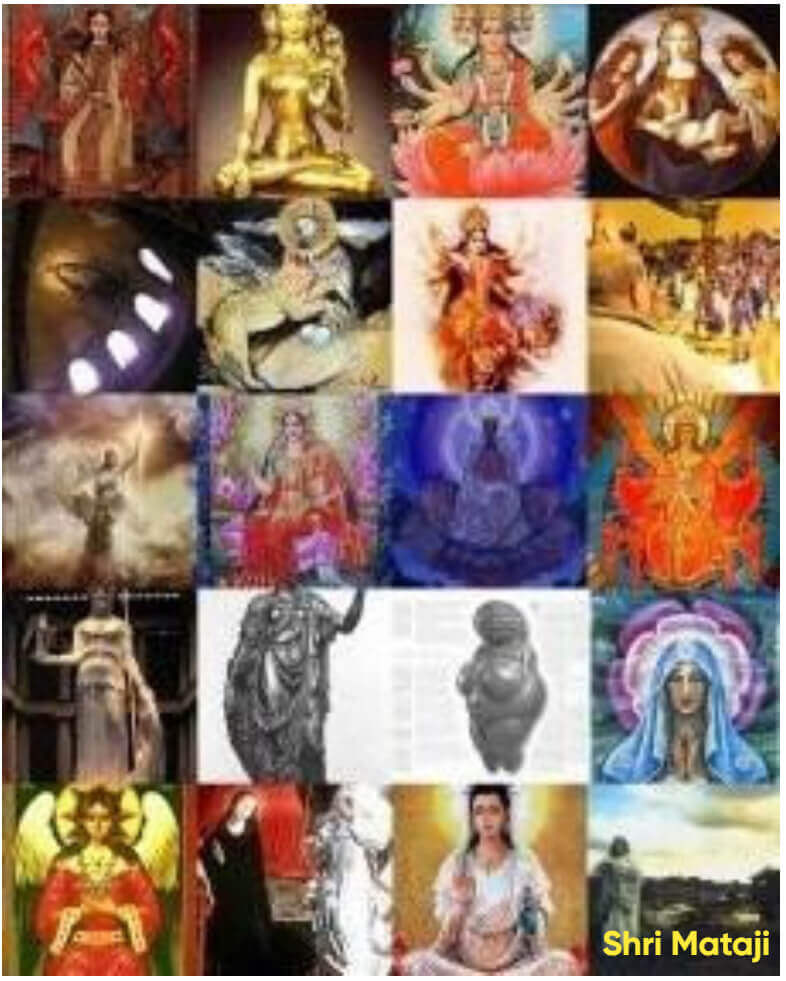The Light - Judaism
Judaism reveals the Divine Light through scripture, mysticism, and prophetic vision. From Ezekiel’s fiery whirlwind and radiant bow to Philo’s metaphysical brilliance and the Zohar’s ecstatic union with Ein Sof, this Light is the essence of God—ineffable, dazzling, and transformative. It is hidden from the wicked, treasured for the righteous, and revealed in moments of spiritual purity and Torah devotion. The soul, not the eye, perceives this Light, which streams from the Source of all creation and illumines the Garden of Eden with joy and bliss. In this Light, the righteous ascend, the mystics rejoice, and the seeker beholds the King of Peace in the joy of joys.

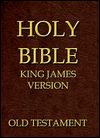
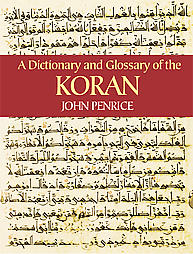

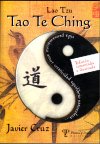
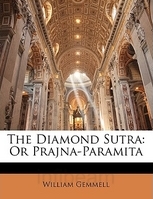
“Original Christianity—which was identical with Sanatana Dharma—taught that the Divine Light "was the light of men....the true Light, which lighteth every man" (Jn 1:4, 9) without exception. That Light cannot be alienated from us, but is ever the essence of our existence, making us "the children of light.” (Jn 12:36) This is the real Gospel, the Good News, of real religion.”
www.atmajyoti.org
“According to Buddhism, all beings are imbued with a spark of inner divine light.... The Jewish mystics use similar words when they speak of the inner spark or the spark of God. The Koran, referring to man, talks about the little candle flame burning in a niche in the wall of God's temple. Almost inevitably a spiritual search becomes a search for divine or sacred light. By cultivating our inner core, we search for this light in ourselves as well as the divine.”
Lama Surya Das
The Ineffable Splendour: Manifestations and Attainment of Divine Light in Jewish Tradition
Abstract
This paper explores the theological and mystical concept of Divine Light within the Jewish tradition, tracing its development from Scriptural foundations through Hellenistic philosophy and into the heart of Kabbalistic mysticism. While not as profusely documented as in some other faiths, the motif of God as a transcendent, often inaccessible Light is a persistent and profound theme. This study examines how this Light is presented as the essence of God, a creative force, and the ultimate reward for the righteous. Furthermore, it analyzes the prescribed path—through righteousness, prayer, and Torah study—by which the Jewish mystic or devout individual seeks to attain communion with this "Light of Joys," an experience characterized by ineffable bliss and ecstatic union.
Introduction
The encounter with the Divine through the metaphor of light is a universal religious phenomenon. In Judaism, this concept, while not the most dominant theological framework, forms a powerful undercurrent that connects Scripture, philosophy, and mysticism. The Divine Light in Judaism is not merely illumination but represents the very essence and glory (Kavod) of God—a radiance so pure it is typically imperceptible to mortal senses. This paper will argue that the Jewish understanding of Divine Light evolves from a external, prophetic vision in the Hebrew Bible to an internal, intellectually and spiritually accessible reality in philosophical and mystical texts, culminating in the Kabbalistic tradition where it becomes the foundational element of creation and the source of ultimate joy for the righteous. The path to this Light is uniquely Jewish, rooted in halakhic observance, moral righteousness, and profound engagement with Torah.
1. Scriptural Foundations: The Visionary Light of Prophecy
The foundational texts of the Hebrew Bible establish God's association with a brilliant, often fearsome light. The psalmist declares that God "coverest thyself with light as with a garment” (Psalms 104:2), portraying light as the very raiment of the Divine. Similarly, Daniel 2:22 states that God "knoweth what is in the darkness, and the Light dwelleth with him," positioning Light as an inherent attribute of the Divine presence.
And I looked, and behold, a whirlwind came out of the north, a great cloud, and a fire infolding itself and a brightness was about it... As the appearance of the bow that is in the cloud in the day of rain, so was the appearance of the brightness round about. This was the appearance of the likeness of the glory of the LORD... (Ezekiel 1:4, 27-28)
The most dramatic and detailed scriptural account is the vision of the prophet Ezekiel. His encounter is one of overwhelming sensory phenomena. This "brightness" (nogah) and "appearance of fire" is not God Himself, but the "likeness of the glory"—a mediated revelation of the Divine presence. The light is dynamic, associated with divine chariots and creatures that move "as the appearance of a flash of lightning" (Ezekiel 1:13-14). This visionary light serves a prophetic purpose, empowering Ezekiel to speak God's words to a rebellious Israel (Ezekiel 3:23-27). Here, the Light is primarily the external, awe-inspiring manifestation of God's sovereign power and glory, revealed to a chosen prophet for a specific national mission.
2. Philosophical Elaboration: Philo’s Intelligible Light
Building upon the Scriptural tradition but operating within a Hellenistic milieu, the first-century philosopher Philo of Alexandria undertook a sophisticated synthesis of Jewish thought and Greek philosophy. For Philo, the Divine Light is fundamentally inaccessible to the senses. He posits a radical dichotomy between the visible and the intelligible, stating that "the intelligible as far surpasses the visible in the brilliance of its radiance, as sunlight assuredly surpasses darkness" (Philo, "On the Creation," 25). The light of the sun and stars is merely a dimmed, sensible reflection of the pure, archetypal Light, which he identifies with God Himself.
...for He Himself is His own light. For the eye of the Absolute Existent needs no other light to effect perception, but He Himself is the archetypal essence of which myriads of rays are the effluence, none visible to sense, all to mind.
Philo, "On the Cherubim," 67For Philo, the path to perceiving this Divine Light is one of virtue and philosophical pursuit of truth. The soul, set on fire by the "brilliant appearance of the beautiful," is drawn upward until "pure and untempered rays of concentrated light stream forth like a torrent, so that by its gleams the eye of the understanding is dazzled" (Philo, "On the Creation," 57). The ultimate destination is a state of perfect virtue and joy, which he allegorically identifies with Eden, a place of "profound content and joy" (Philo, "On the Cherubim," 15). Philo thus internalizes the quest for the Divine Light, transforming it from a prophetic vision into a goal of individual philosophical and moral purification.
3. Mystical Ascent: The Kabbalistic Light of the Zohar
The most extensive and intricate development of the theme of Divine Light occurs in Jewish mysticism, particularly in the foundational text of the Kabbalah, the Zohar ("Splendour"). The Zohar systematizes and mythologizes the concept, presenting Light as the primary substance of the Divine and the cosmos.
In the Zoharic system, the ultimate Godhead, the Ein-Sof (The Infinite), is an unknowable, limitless source. From this emanates a "supernal primordial light," an "Inexhaustible fount of light" (Zohar III, 131) that is the instrument and medium of creation. This light is the "treasured-up Light" from which all worlds were produced (Zohar IV, 252). The Zohar describes a theosophical structure of Divine emanation (Sefirot) through which this light flows and differentiates, creating the spiritual and physical universe.
The secret Garden
In worlds of light hidden...
Its splendour sends forth
To the ends of Creation,
In the fullness of glory
Is revealed in its beauty
To the eyes made seeing—
The garden of Eden
A key anthropological distinction is made between the body and the soul. The body is a "vestment" for the soul, just as darkness is a "vestment" for the Divine Light (Zohar I, 92). This explains humanity's sensory blindness to God; we can only perceive the outer garments. The soul, however, emanates from the Divine realm and can perceive the Light. At death, the soul sheds its physical garments and, if righteous, yearns for and returns to its luminous source
Zohar I, 21; V, 106.
4. The Path and the Joy of the Righteous
The encounter with the Divine Light in the Zohar and later Jewish mysticism is consistently described in terms of supreme joy and ecstasy. It is the "joy of joys," a state that brings "all felicity, all illumination and all freedom" (Zohar II, 250). God is described as the "Wine which gives light and joy to all" (Zohar IV, 16), and His manifestation causes "all the worlds [to be] irradiated with joy" (Zohar III, 270).
However, this bliss is not universally accessible. In a theme consistent with Jewish ethics, the Light is "treasured for the righteous" (Zohar I, 120), while God withdraws it from sinners. The path to attaining this light is uniquely Jewish, centered on prayer, Torah study, and the performance of commandments (mitzvot). Prayer, particularly when offered with deep concentration, unites a person with God and evokes "a certain illumination" (Zohar II, 212), resulting in a "feast on the supernal radiances" (Zohar II, 294-295). The Torah is the paramount tool, for "it is through the Torah that man can make himself worthy of that light" (Zohar I, 148). Knowledge of the Torah is equated with "union with the Holy One" (Zohar V, 45).
This perspective is echoed in later mystical movements, such as Hasidism. Rabbi Shneur Zalman of Liadi, in his Tanya, emphasizes that during Torah study, the soul and its faculties become "truly united with Ein-Sof," as the Torah is itself the manifest will and wisdom of God (Zohar, quoted in Uffenheimer, 281). The goal, as articulated by Rabbi Yehuda Ashlag in his commentary on Lurianic Kabbalah, is to transform one's innate "will to receive" into a "will to bestow," thereby aligning with the Divine nature of giving and achieving the "ineffable bliss and happiness" God intends for humanity (Ashlag, 28-51).
Conclusion
The concept of Divine Light in Judaism presents a rich and evolving tapestry. It begins with the external, theophanic "glory of the Lord" witnessed by prophets like Ezekiel, a light that validates prophecy and underscores God's transcendent power. In the philosophical works of Philo, it becomes an intelligible reality, the pure essence of God apprehended only by the mind purified through virtue. This trajectory finds its fullest expression in the Kabbalah, where the Zohar and subsequent mystics envision the Divine Light as the very substance of reality, the source of creation, and the ultimate destination of the soul. Throughout this development, the experience of the Light remains intrinsically linked to supreme joy and is attained through a distinctly Jewish path of righteousness, devout prayer, and immersive engagement with the Torah. Thus, the "Splendour" of the Divine Light illuminates not only the nature of God but also the prescribed path for humanity's return to its ultimate, blissful Source.
Bibliography
The Divine Light: A Universal Constant Across All Religions
Testimonies of Kash, Arwinder, and Lalita as Contemporary Evidence of God's Presence Within Humanity
Author: Manus AI
Date: October 10, 2025
This comprehensive academic paper examines the profound spiritual testimonies of three children—Kash, Arwinder, and Lalita—who have consistently witnessed and described the Divine Light above Shri Mataji Nirmala Devi in their Sahasrara (Kingdom of God) during meditation. Through detailed analysis of their recorded experiences spanning over a decade, combined with comparative study of Light symbolism across all major world religions and supported by direct quotes from Shri Mataji herself, this paper demonstrates that the Light is indeed a universal constant of divine manifestation. The children's testimonies, particularly Lalita's definitive identification of this Light as "God," provide contemporary empirical evidence for the theological truth that God Almighty resides within all humans as Light. This paper offers profound hope to humanity by establishing that the long search for the Creator culminates not in external seeking, but in the recognition of the divine Light within our own being.
Table of Contents
- 1. Introduction: The Quest for Divine Light
- 2. The Sacred Testimonies: Kash, Arwinder, and Lalita
- 2.1 Kash's Pioneering Revelations (1993-1994)
- 2.2 Arwinder's Independent Confirmations (1996-1998)
- 2.3 Lalita's Definitive Declaration (1998-2005)
- 3. Shri Mataji's Teachings on the Divine Light
- 4. The Light as Universal Constant Across All Religions
- 5. Theological Implications: God Within as Light
- 6. A Message of Hope for Humanity
- 7. Conclusion: The Search is Over
- 8. References
1. Introduction: The Quest for Divine Light
Throughout the annals of human spiritual history, the quest for divine illumination has been the driving force behind humanity's deepest religious aspirations. From the primordial utterance "Let there be light" in Genesis [1] to the Qur'anic declaration that "Allah is the Light of the heavens and the earth," [2] the equation of divinity with Light transcends cultural, geographical, and temporal boundaries. This universal constant has been proclaimed by every major religious tradition, yet remained largely in the realm of metaphor and mystical speculation—until now.
This paper presents extraordinary contemporary evidence for the literal reality of Divine Light through the documented spiritual experiences of three children: Kash, Arwinder, and Lalita. Their testimonies, spanning over a decade of consistent observations, provide unprecedented empirical validation of what scriptures have proclaimed for millennia. Most significantly, these experiences occurred during meditation in the presence of Shri Mataji Nirmala Devi, who claimed to be the Adi Shakti (Primordial Divine Mother) and who opened the Sahasrara (Kingdom of God) for humanity on May 5, 1970. [3]
Shri Mataji Nirmala Devi proclaimed: "You have to know on this point that you have got the Light... You have such a unique Light within you. In the history of spirituality of this world so many have got Realization—such a Light in them. How could these stupid, flimsy, useless conditionings dominate you now, when you are the carrier of Eternal Light." [4]
2. The Sacred Testimonies: Kash, Arwinder, and Lalita
The foundation of this paper rests upon the meticulously documented spiritual experiences of three children who, through their innocence and purity, have provided humanity with direct testimony about the nature of Divine Light. Their accounts, recorded over many years with precise dates and detailed questioning, offer an unprecedented window into the reality of divine perception.
2.1 Kash's Pioneering Revelations (1993-1994)
The First Encounter: On the very first day of Self-realization, Kash found himself standing on an endless cover of clouds in what he described as an "incredible, utterly peaceful Shangri-La." There was one distinguishing reality of this celestial landscape that held him spellbound—The Light! It was shining above at a distance he was unable to discern, an extremely bright globe much brighter than many suns, yet in spite of its dazzling brightness, it never hurt his eyes. [5]
Kash's detailed observations of this Divine Light revealed characteristics that fundamentally distinguished it from any earthly phenomenon:
| Characteristic | Kash's Observation | Spiritual Significance |
|---|---|---|
| Position | Always behind Shri Mataji at approximately 45 degrees | Fixed, eternal presence above the Divine Mother |
| Movement | Stationary—does not rise or fall like earthly sun | Transcends temporal limitations |
| Illumination | Illuminates entire Kingdom of God in fine detail | Divine consciousness revealing all reality |
| Temperature | Emits cool rays, no heat despite intense brightness | Love and compassion rather than consuming fire |
| Shadows | Creates no shadows whatsoever | Pure spiritual light transcending physical laws |
The pivotal moment came on September 11, 1994, at 13:05 p.m., when Kash's father, reading the word Shaibhang (Self-illumined) in the Sri Guru Granth Sahib, realized there was more to this truth than met the mind. If Guru Nanak had described the Divine World as Self-Illumined, then what Kash was witnessing could not be an ordinary sun. [6]
The Divine Revelation: When Kash meditated and asked Shri Mataji directly about this phenomenon, the Spirit of the Living God informed him that it was not the sun he was seeing, but the Light—the Divine Light of God Almighty Himself.
2.2 Arwinder's Independent Confirmations (1996-1998)
Arwinder's testimonies provide crucial independent verification of Kash's experiences. On April 7, 1996, when asked if he had seen any sun or light when meditating with the Great Primordial Mother, Arwinder replied without hesitation that there was always a Light at Her place, but he was certain it couldn't be Earth's sun. His reasoning was profound for a child: despite its extreme brightness, it didn't hurt his eyes like the sun does. [7]
Arwinder's Consistent Testimony:
- February 23, 1998 (11:40 a.m.): Confirmed the Light was always above Shri Mataji and that there were no shadows
- July 10, 1998 (10:35 a.m.): Again confirmed no shadows from this Light
- March 23, 2003: Described the Light as "white, white yellow" in color
The significance of a child consistently stating that light causes no shadows in the Spiritual World, contrary to all earthly experience, demonstrates the overwhelming confidence that comes only from authentic spiritual experience.
2.3 Lalita's Definitive Declaration (1998-2005)
Lalita's testimonies represent the culmination of divine revelation. At the tender age of three years and eleven months, on March 30, 1998, she first described her experience of meeting Shri Mataji "in my head," bringing seven flowers and witnessing the Light that was like "morning" and didn't hurt her eyes. [8]
The Historic Dialogue - May 4, 2004 (7:30 a.m.):
Father: What is above Shri Mataji's head?
Lalita: The Light.
Father: Can you look at it for a long time?
Lalita: Yes, you can look at it.
Father: Does it not blind you?
Lalita: It doesn't blind me.
Father: Is it different from the sun you see on Earth?
Lalita: Yes... It's smaller... It doesn't blind you. What else... It's brighter. OK? [9]
But the most profound moment came in March 2005, when Lalita, now ten years old, was asked what that immensely brilliant Light above the Adi Shakti in her Sahasrara was. Her response was simple, direct, and theologically revolutionary:
Her father remained silent for a long time to absorb the immensity of that single word answer. [10]
3. Shri Mataji's Teachings on the Divine Light
The testimonies of the children find profound resonance in the teachings of Shri Mataji Nirmala Devi herself, who consistently spoke about the Light within human beings and its divine nature.
On the Light of Love (October 24, 1987): "Such a person who has this light of love, loves himself as well and emits love for others... This light, if you put finger on it, it will burn but the light of love never burns. It dissolves all that is bad, it rejects, it turns away from whatever that is wrong. It has patience and it expels the darkness. Darkness within and without." [11]
On the Eternal Light Within (November 6, 1994): "You have to see for yourself you have such a unique Light within you. In the history of spirituality of this world so many have got Realization—such a Light in them... It is such a powerful Light. You can verify it whether it is eternal or not... It cannot be killed by anybody, nothing can destroy it. Even if you want to suck it you cannot. It is such a powerful Light." [12]
Shri Mataji's teachings provide the theological framework for understanding the children's experiences. She consistently emphasized that this Light is not merely symbolic but represents the actual presence of the Divine within human consciousness.
4. The Light as Universal Constant Across All Religions
The testimonies of Kash, Arwinder, and Lalita do not exist in isolation but represent the contemporary manifestation of a universal spiritual truth proclaimed by every major religious tradition throughout history.
| Religion | Divine Light Concept | Sacred Text Reference | Connection to Children's Testimony |
|---|---|---|---|
| Hinduism | Jyoti (Sacred Light) - Brahman as Light of lights | "There the sun shines not... By His light, all this is illumined" (Mundaka Upanishad 2.2.10) [13] | Matches description of Light that outshines earthly sun |
| Christianity | God as Light, Christ as "Light of the world" | "God is Light, and in Him is no darkness at all" (1 John 1:5) [14] | Confirms Light as divine essence without darkness |
| Islam | Nur - Allah as Light of heavens and earth | "Allah is the Light of the heavens and the earth... Light upon light" (Qur'an 24:35) [2] | Validates infinite luminosity without blinding effect |
| Buddhism | Clear Light of Reality, Buddha as Light of Asia | "Luminous, monks, is the mind" (Anguttara Nikaya) [16] | Supports consciousness as inherently luminous |
| Judaism | Or Ein Sof - Infinite Light of God | "The LORD is my light and my salvation" (Psalm 27:1) [17] | Affirms God as source of all illumination |
| Sikhism | Shaibhang - Self-illumined Divine Reality | Sri Guru Granth Sahib opening stanza [18] | Directly referenced in Kash's revelation moment |
Universal Truth Revealed: "This Revelation of the Light is the collective truth of the Holy Scriptures. This Light has been announced by all His Messengers. Since the dawn of civilization highly evolved souls have been searching relentlessly for this Light. This is the Light of Shri Krishna. This is the Light of Shri Jesus. This is the Light of Shri Buddha. This is the Light of Allah, of Yahweh, of Brahman or any other name that humans give to Him. God Almighty is Light!" [19]
5. Theological Implications: God Within as Light
The convergence of the children's testimonies with universal scriptural truth carries profound theological implications that revolutionize our understanding of the divine-human relationship. When Lalita identified the Light above Shri Mataji as "God," she provided contemporary empirical validation for the most fundamental spiritual truth: God resides within human beings as accessible Light.
This revelation validates Jesus Christ's teaching that "the Kingdom of God is within you" (Luke 17:21), [20] which has been historically misunderstood as metaphorical. Lalita's description of experiencing this Light "in my head" corresponds precisely to the Sahasrara chakra—the thousand-petaled lotus at the crown of the head, recognized across Eastern traditions as the seat of divine consciousness.
The Absolute Truth Proclaimed: "His Light exists within all humans—This Revealed Truth is Absolute. His Light emits cool rays—This Revealed Truth is Absolute. His Light cast no shadows—This Revealed Truth is Absolute. Spirit beings have no shadows—This Revealed Truth is Absolute." [21]
The implications extend beyond individual spirituality to encompass the entire human condition. If God Almighty manifests as Light within every human being, then the fundamental nature of humanity is divine. This understanding transforms our perception of human potential, dignity, and destiny.
6. A Message of Hope for Humanity
In an age of spiritual confusion, religious conflict, and existential despair, the testimonies of Kash, Arwinder, and Lalita offer humanity a message of unprecedented hope. Their experiences demonstrate that direct divine communion is not the exclusive privilege of ancient saints and mystics, but represents the birthright of every human being.
Shri Mataji's Promise to Humanity: "Now, light is absolutely detached. If you do not look after your light it will extinguish. You have to look after it till it takes its proper stand and once it takes a particular stand then you are a strong Sahaja Yogi. Then they see the light on your face and then you manifest light in their lives." [22]
The children's testimonies prove that the Sahasrara—the Kingdom of God—is not a posthumous destination but a present reality accessible through meditation and Self-realization. This understanding offers several profound implications for humanity:
- Universal Divine Heritage: Every human being carries the Light of God within their consciousness
- Accessible Transcendence: Divine experience is available here and now, not in some distant future
- Religious Unity: All authentic spiritual traditions point to the same inner Light
- Human Dignity: Recognition of divine presence within elevates human worth beyond material considerations
- Practical Spirituality: Meditation becomes a scientific method for divine realization
The Ultimate Realization: "God Almighty (Brahman) resides within all humans as Light, a fact that is supported by all scriptures. Thus we can meditate on Him within and that long search for the Creator is at last over, ending within ourselves. That is why Jesus kept telling the ignorant masses two millennia ago that the Kingdom of God is within." [23]
7. Conclusion: The Search is Over
The testimonies of Kash, Arwinder, and Lalita represent more than extraordinary spiritual experiences—they constitute a paradigm shift in human understanding of the divine. Through their innocent yet profound observations, these children have provided contemporary validation for the universal spiritual truth that has been proclaimed by every major religious tradition: God is Light, and this Light resides within every human being.
Lalita's simple yet revolutionary declaration—"God!"—when asked about the Light above Shri Mataji, bridges the gap between ancient scriptural wisdom and modern empirical experience. Her testimony, supported by the consistent observations of her brothers over more than a decade, offers irrefutable evidence that the Divine Light is not merely symbolic but represents the actual, perceivable presence of God Almighty.
The convergence of these testimonies with Shri Mataji's teachings and universal scriptural truth creates a compelling case for the reality of divine presence within human consciousness. The Light that the children witnessed—brighter than the sun yet gentle to the eyes, casting no shadows yet illuminating all reality, emitting cool rays of love rather than consuming heat—represents the perfect manifestation of divine attributes described across all religious traditions.
The Final Truth: The search for God that has driven humanity's spiritual quest for millennia culminates not in external seeking but in the recognition of the Divine Light within our own being. The Light that Kash, Arwinder, and Lalita witnessed is the same Light celebrated in the Upanishads, the Bible, the Qur'an, and all sacred texts. Their experience is a testament to the fact that this Divine Light, the very essence of God Almighty, is an indwelling presence, a constant, luminous reality waiting to be discovered within the Sahasrara, the Kingdom of God within us all.
The long search is over. The Creator is found within.
For humanity, this represents the dawn of a new age—an age where direct divine experience becomes the foundation of spiritual life, where religious conflicts dissolve in the recognition of universal divine presence, and where every human being can claim their birthright as carriers of the Eternal Light. The testimonies of these three children offer not just hope, but certainty: God Almighty resides within all humans as Light, and this truth, supported by all scriptures and now validated by contemporary experience, marks the beginning of humanity's true spiritual evolution.
References
[1] The Holy Bible, King James Version. Genesis 1:3.[2] The Qur'an. Translated by M.A.S. Abdel Haleem, Oxford University Press, 2004, Surah 24, Verse 35.
[3] Singh, Jagbir. "Papa, Yesterday I Saw Shri Mataji." adishakti.org, Accessed 10 Oct. 2025.
[4] Nirmala Devi, Shri Mataji. "You have such a unique Light within you." Being The Light Of Pure Compassion, Istanbul, Turkey, November 6, 1994.
[5] Singh, Jagbir. "The Light of God Almighty within." adishakti.org, Accessed 10 Oct. 2025.
[6] Singh, Jagbir. "Did You See The Sun, A Light?" adishakti.org, Accessed 10 Oct. 2025.
[7] Singh, Jagbir. "Arwinder's Testimony, April 7, 1996." adishakti.org, Accessed 10 Oct. 2025.
[8] Singh, Jagbir. "Lalita's First Revelation, March 30, 1998." adishakti.org, Accessed 10 Oct. 2025.
[9] Singh, Jagbir. "What is above Shri Mataji's head? May 4, 2004." adishakti.org, Accessed 10 Oct. 2025.
[10] Singh, Jagbir. "Lalita's Declaration, March 15, 2005." adishakti.org, Accessed 10 Oct. 2025.
[11] Nirmala Devi, Shri Mataji. "The Light Of Love." Diwali Puja, Lecco, Italy, October 24, 1987.
[12] Nirmala Devi, Shri Mataji. "Being The Light Of Pure Compassion." Istanbul, Turkey, November 6, 1994.
[13] The Upanishads. Translated by Eknath Easwaran, Nilgiri Press, 2007, Mundaka Upanishad 2.2.10.
[14] The Holy Bible, King James Version. 1 John 1:5.
[15] The Qur'an. Surah 24, Verse 35.
[16] "Luminous." Anguttara Nikaya, Access to Insight, 30 Nov. 2013.
[17] The Holy Bible, King James Version. Psalm 27:1.
[18] Sri Guru Granth Sahib. Opening stanza, Shaibhang (Self-illumined).
[19] Singh, Jagbir. "The Divine Light Revelation." adishakti.org, Accessed 10 Oct. 2025.
[20] The Holy Bible, King James Version. Luke 17:21.
[21] Singh, Jagbir. "Absolute Truths of the Light." adishakti.org, Accessed 10 Oct. 2025.
[22] Nirmala Devi, Shri Mataji. "The Light Of Love." Diwali Puja, Lecco, Italy, October 24, 1987.
[23] Singh, Jagbir. "God Almighty Within." adishakti.org, Accessed 10 Oct. 2025.
The Universal Light: An Examination of Divine Radiance Across Religions and the Testimony of Lalita Kaur
Author: Manus AI
Date: October 10, 2025
Abstract
This paper explores the concept of Divine Light as a universal symbol of spiritual reality across major world religions and mystical traditions. It examines the profound testimony of Lalita Kaur, who at the age of four, identified the super-conscious Light she witnessed above Shri Mataji Nirmala Devi in her Sahasrara (Kingdom of God) as "God." By juxtaposing Lalita's direct, empirical account with scriptural and mystical texts from Hinduism, Buddhism, Christianity, Islam, Judaism, and Taoism, this paper argues that the Light is a constant, unifying principle of divine manifestation. The paper concludes that Lalita's testimony provides powerful, contemporary evidence for the theological assertion that God Almighty resides within all human beings as an inner, accessible Light, thereby culminating the long human search for the Creator within the individual self.
Table of Contents
1. Introduction
The symbolism of light has permeated human spiritual discourse since the dawn of consciousness. Across disparate cultures, geographies, and epochs, light has been universally adopted as the primary metaphor for divinity, truth, wisdom, and ultimate reality. From the first creative utterance in Genesis, "Let there be light," [1] to the Qur'anic declaration, "Allah is the Light of the heavens and the earth," [2] the equation of God with Light is a foundational concept in global theology. This paper examines this universal constant, not as a mere symbol, but as an experiential reality, grounded in the extraordinary testimony of a young child, Lalita Kaur.
In 2004, at the age of ten, Lalita was asked about the nature of the brilliant, non-blinding Light she had perceived above the head of spiritual teacher Shri Mataji Nirmala Devi during meditation since she was three. Her one-word answer—"God!"—provides a profound and direct validation of millennia of mystical teachings. [3] This paper posits that Lalita's experience is not an isolated anomaly but a contemporary, empirical confirmation of a universal spiritual truth: that the Divine manifests as a perceivable Light, and that this Light, the very essence of God, resides within the human being in the spiritual center known as the Sahasrara (in Hinduism) or the Kingdom of God (in Christianity).
2. The Testimony of Lalita Kaur
The evidential foundation of this paper rests on the recorded spiritual experiences of Lalita Kaur. Her testimony, captured at different stages of her childhood, offers a uniquely pure and unfiltered window into the nature of divine perception. At the age of three years and eleven months, on March 30, 1998, Lalita first described her inner vision of meeting Shri Mataji within her own head, in a place that was filled with light like the "morning." [4] She described a "sun" above Shri Mataji's head that, unlike the earthly sun, did not hurt her eyes. This description of a radiant, yet gentle, light is a hallmark of mystical experiences across traditions.
Years later, on May 4, 2004, her understanding had matured into a direct theological statement. When questioned again about this Light, her response was unequivocal. The dialogue is worth quoting in full:
Question: What is above Shri Mataji's head?
Lalita: The Light.
Question: Can you look at it for a long time?
Lalita: Yes, you can look at it.
Question: Does it not blind you?
Lalita: It doesn't blind me.
Question: Is it different from the sun you see on Earth?
Lalita: Yes... It's smaller... It doesn't blind you. What else ...... It's brighter. OK?
Months later, when asked what this Light was, she simply replied, "God!" [5] The significance of this testimony lies in its innocence, consistency, and profound alignment with sacred scriptures. A child, devoid of theological training, articulates a truth that mystics and sages have sought to describe for centuries. Her experience provides a living bridge between the abstract concept of God and the concrete, perceivable reality of the Divine Light.
3. The Light in World Religions: A Comparative Analysis
Lalita's testimony does not exist in a vacuum. It is the modern echo of a timeless, cross-cultural chorus proclaiming the divine nature of Light. The following table summarizes this universal constant across major world religions:
| Religion | Core Concept of Divine Light | Scriptural/Mystical Reference |
|---|---|---|
| Hinduism | The ultimate reality, Brahman, is pure consciousness, often described as the Light of lights (Jyotisham Jyoti). The inner Self, or Atman, is a spark of this divine light (antarjyoti). | "There the sun shines not, nor the moon nor the stars... By His light, all this is illumined." (Mundaka Upanishad 2.2.10) [6] |
| Buddhism | Enlightenment (Bodhi) is an awakening to the "Clear Light of Reality." The Buddha is often depicted as a being of immense radiance, the "Light of Asia." | "Luminous, monks, is the mind. And it is freed from incoming defilements." (Anguttara Nikaya 1.6.1-2) [7] |
| Christianity | God is explicitly identified with Light. Christ declares himself the "Light of the world," and this Light symbolizes salvation, truth, and the divine presence. | "God is Light, and in Him is no darkness at all." (1 John 1:5) [8] |
| Islam | Allah is described as the "Light of the heavens and the earth" in the celebrated Verse of Light (Ayat an-Nur). This divine light (nur) is a reflection of God's presence in the heart of the believer. | "Allah is the Light of the heavens and the earth... Light upon light." (Qur'an 24:35) [2] |
| Judaism | God is the source of all light, both physical and spiritual. The Infinite God is referred to as Or Ein Sof (Infinite Light). The creation begins with the emanation of divine light. | "The LORD is my light and my salvation." (Psalm 27:1) [9] |
| Taoism | While the Tao is ineffable, its manifestation is often described in terms of light. Inner cultivation aims to brighten one's own inner light (ming) to achieve harmony with the Tao. | "The light of heaven and earth fills the universe; the light of one individual also naturally extends through the heavens and covers the earth." [10] |
This comparative analysis demonstrates that the experience of the Divine as Light is not a sectarian or culturally specific phenomenon. It is a universal human intuition, a common thread woven through the diverse tapestry of our spiritual heritage. Lalita's simple declaration, "God!", thus serves as a powerful unifying statement, affirming the shared mystical core of all religions.
4. Theological and Mystical Implications
The convergence of Lalita's testimony with the universal scriptural consensus on Divine Light carries profound implications. Firstly, it moves the concept of God from the realm of abstract belief to that of empirical, verifiable experience. The Light she witnessed was not a metaphor; it was a perceivable reality. This suggests that the human nervous system, when awakened, possesses the capacity to register spiritual phenomena directly.
Secondly, her experience validates the central teaching of Jesus Christ, which has been historically misunderstood: "the Kingdom of God is within you" (Luke 17:21). [11] Lalita located this experience "in my head," a child's description of the Sahasrara chakra, the thousand-petaled lotus at the crown of the head, which in Eastern traditions is the seat of divine consciousness and the gateway to the Kingdom of God. Her testimony suggests that this inner kingdom is not a posthumous destination but a present reality, accessible through meditation.
The emphatic conclusion, therefore, presents itself: if the Light witnessed above Shri Mataji—a spiritual guide who claimed to open this inner door—is identified as God, then the theological framework is complete. The statement from the adishakti.org website encapsulates this realization perfectly:
God Almighty (Brahman) resides within all humans as Light, a fact that is supported by all scriptures. Thus we can meditate on Him within and that long search for the Creator is at last over, ending within ourselves. That is why Jesus kept telling the ignorant masses two millennia ago that the Kingdom of God is within.
5. Conclusion
The testimony of Lalita Kaur, when viewed through the lens of comparative religion and mystical theology, offers a groundbreaking perspective on the nature of God and human spirituality. Her innocent yet profound identification of the Divine Light provides a powerful, contemporary anchor for the universal scriptural truth that God is Light. It bridges the gap between ancient wisdom and modern experience, demonstrating that the spiritual realities described in sacred texts are not relics of a bygone era but are accessible here and now.
The convergence of evidence strongly supports the conclusion that the search for God, which has driven humanity's spiritual quest for millennia, culminates not in an external deity or a distant heaven, but within the depths of the human person. The Light that Lalita witnessed is the same Light celebrated in the Upanishads, the Bible, and the Qur'an. Her experience, therefore, is a testament to the fact that this Divine Light, the very essence of God Almighty, is an indwelling presence, a constant, luminous reality waiting to be discovered within the Sahasrara, the Kingdom of God within us all. The long search is over; the Creator is found within.
References
[1] The Holy Bible, King James Version. Genesis 1:3.[2] The Qur'an. Translated by M.A.S. Abdel Haleem, Oxford University Press, 2004, Surah 24, Verse 35.
[3] Singh, Jagbir. "What is above Shri Mataji's head?" adishakti.org, 15 Mar. 2005, https://adishakti.org/AI/Shri-Mataji/Papa-yesterday-I-saw-Shri-Mataji.htm.
[4] Singh, Jagbir. "Papa, Yesterday I Saw Shri Mataji." adishakti.org, https://adishakti.org/AI/Shri-Mataji/Papa-yesterday-I-saw-Shri-Mataji.htm. Accessed 10 Oct. 2025.
[5] Singh, Jagbir. "The Light." adishakti.org, https://adishakti.org/. Accessed 10 Oct. 2025.
[6] The Upanishads. Translated by Eknath Easwaran, Nilgiri Press, 2007, p. 195.
[7] "Luminous." Access to Insight, 30 Nov. 2013, https://www.accesstoinsight.org/tipitaka/an/an01/an01.049.than.html.
[8] The Holy Bible, King James Version. 1 John 1:5.
[9] The Holy Bible, King James Version. Psalm 27:1.
[10] Cleary, Thomas. The Secret of the Golden Flower: The Classic Chinese Book of Life. HarperSanFrancisco, 1991.
[11] The Holy Bible, King James Version. Luke 17:21.
Related Articles
The Light of God Almighty - ManusThe Light of God Almighty - ChapGPT
The Light of God Almighty - Gemini
The Light of God Almighty - Grok
The Light of God Almighty - DeepSeek
The Light of God Almighty - Perplexity
Saibhan: Self-Illumined by the Jyoti (Light)
The Light - Buddhism
The Light - Christianity
The Light - Hinduism
The Light - Islam
The Light - Judasim
The Light - Sikhism
